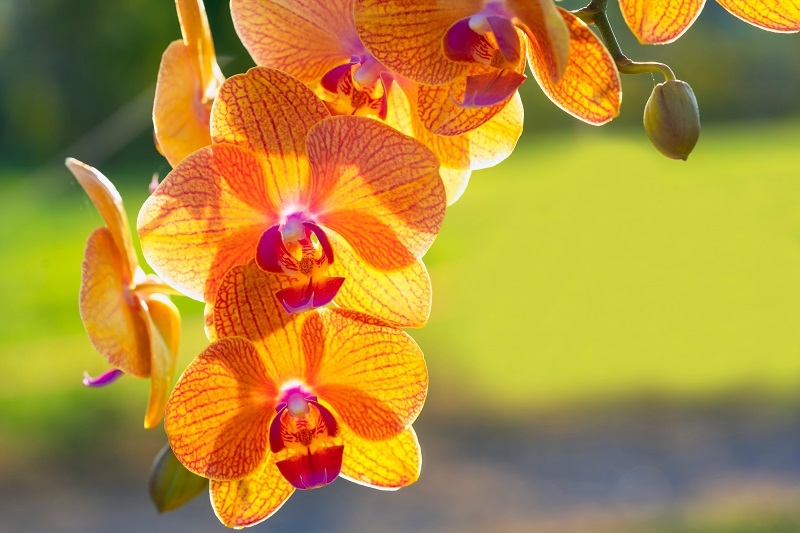
The technique matters greatly when maintaining orchids in their healthiest and most vibrant states. Beginners usually fail at orchid watering, realizing orchid sun requirements, and keeping flowers consistently over the blooming cycle. With good orchid tips on how to do things right, your plant will thrive for years. This guide discusses all the information on watering routines and repotting, right through to dealing with orchid problems confidently.
Orchids are unique plants with specialized needs that differ from those of typical houseplants. Despite their reputation for being tender, orchids can be surprisingly durable if you know how to care for them. With a few essential orchid care tips in mind, you can enjoy your orchids for long periods in the future, with the coming blooms providing spectacular flowers in striking and beautiful displays.
The health of your orchid is all about balancing water, light, nutrients, and timing. Here, we will review some fundamental practices for helping your orchids receive the necessary care.
Watering (and proper watering) is one of the most critical yet misunderstood aspects of orchids—many beginners either overwater or underwater, which leads to root rot or dehydration. Following proven orchid care tips will help you avoid watering too little or too much and give you proper hydration without harming your plant.
By making these adjustments, you can avoid one of the most common downfalls while gaining mastery over watering orchids.
Light exposure is another crucial variable in good orchid health. Orchids do well in bright, indirect light. Too much bright light and your orchid's leaves can burn. If there is too little light, your orchid will not bloom.
Knowing orchids' sunlight needs will help you create an environment that promotes the health of the foliage and consistent blooming.
One of the best things about growing orchids is seeing them rebloom. The orchid bloom cycle will typically go through these stages:
Understanding the orchids' cycle is essential for them to bloom year after year. Proper orchid care tips (balanced light, proper watering, and fertilizing as active growth resumes) relate to the blooming process and whether it will happen again.
Repotting is an integral part of maintaining healthy orchids. Over time, potting media breaks down, compacting around roots and limiting airflow. Following an orchid repotting guide ensures your plant stays healthy.
Though repotting might seem overwhelming, it's essential for long-term successful orchid growth. If you follow the correct orchid care strategies, it will be easy and worth it.

No matter how well you follow best practices, problems will arise. Knowing how to recognize and repair them is the key to success in the long term.
If you proactively troubleshoot orchid problems, it will protect and keep it going strong.
Fertilizer is integral to orchid care tips, particularly growth and bloom preparation. Use a balanced, water-soluble orchid fertilizer (20-20-20) at half strength.
Regular, light feeding provides orchids with the nutrients necessary to support their bloom cycles and general vigor.
Each season presents specific challenges and care needs.
Observe the seasonal shifts in your plant’s needs and you’ll enjoy flowers indoors year-round.
When you’re comfortable with the basics, consider enhancing your techniques to optimize plant care.
These orchid care tips are for orchids moving from merely existing to thriving.
Aside from water and light, the surrounding environment is critical to an orchid's health. Temperature, humidity, and airflow affect growth and the cycle of an orchid's flowers. Orchids generally prefer temperatures between 65°F and 75°F, with slightly cooler conditions at nighttime. Keeping the humidity around 50–70% will help keep the orchid from dehydrating, while appropriate airflow will reduce the risk of fungal disease. Proper orchid care practices combined with the ideal growing conditions will provide strong root development, healthy leaves, and flowers at a regular frequency. Growers who have experienced orchids with bent, curled, or drooping leaves or whose flowers never seem to "open can solve the dilemma by troubleshooting growing conditions before troubleshooting orchid problems and issues.
Orchids can seem fragile, but with proper practices, orchids pay back growers with years of loveliness. Learning how to water orchids, provide orchid sunlight requirements, maintain the orchid bloom cycle, an orchid repotting guide, and fix orchid issues will build your confidence and success with orchid growing.
With regular attention and these successful orchid care techniques, your orchids will flourish, rebloom, and delight season after season.
This content was created by AI